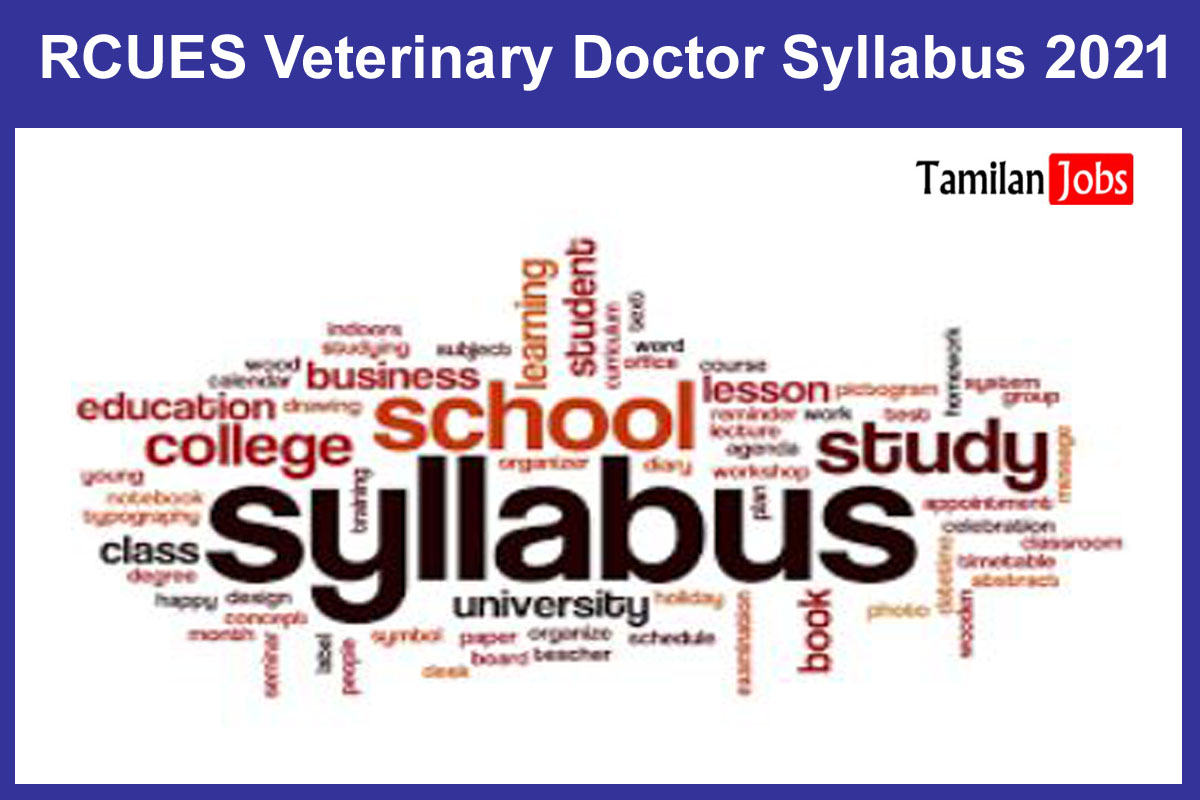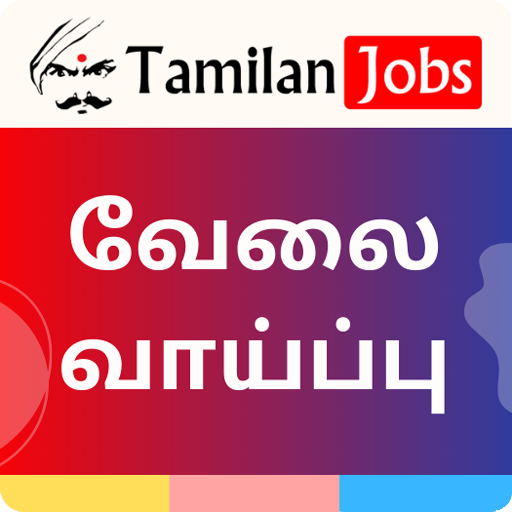RCUES Veterinary Doctor Syllabus 2021 PDF: Regional Center for Urban and Environmental Studies (RCUES), Hyderabad officials has released the RCUES Exam Syllabus 2021 and Exam Pattern for Veterinary Doctor and Para-Medical Assistant Vacancies. Many aspirants have applied for the District Judge Exam and waiting for the syllabus and Exam pattern for preparation. All those interested candidates now download your RCUES Veterinary Doctor Syllabus 2021 from the direct download link attached below. Candidates can go through the syllabus and exam pattern from here and do their exams well.
RCUES Syllabus 2021 – Overview

| Organization | Regional Center for Urban and Environmental Studies (RCUES), Hyderabad |
| Post Name | Veterinary Doctor and Para-Medical Assistant |
| Category | Syllabus |
| Status | Released |
| Job Location | Hyderabad |
| Official website | http://rcueslucknow.org/ |
RCUES Exam Pattern 2021:
| Written Examination (Objective Type) | No. of Questions | Duration (Minutes) | Maximum Marks |
| General Studies | 50 |
120 |
100 |
| Technical (Core Subject) | 50 |
RCUES Syllabus 2021:
Veterinary Doctor:
I. General Studies
- Current Affairs – Regional, National and International importance in Politics, Economy,
Society, Science, Technology, Arts, Sports, Culture and Governance. - General Science and its applications to the day to day life
- History, Economy, Geography and Polity of India
- Basic English
- Reasoning and Analytical Ability
- Fundamental of Computers
II. Technical
UNIT – I: GENERAL
Role of livestock and their products in the Indian economy and human health, current livestock programmes and policies of State and Nation – Economics of dairy, sheep, goat, poultry, pig and rabbit farming; constraints to the livestock development programs, common offenses against animals – SPCA, Animal Welfare Board of India, NGOs.
UNIT – II: VETERINARY ANATOMY, PHYSIOLOGY, AND BIOCHEMISTRY
Gross study of properties and structure of bones, joints, muscles of the skeleton; organs of digestive, respiratory, circulatory, urinary, nervous, and reproductive systems; Mechanism of respiration; General functions of blood and its constituents (blood cells, plasma & serum) coagulation, cardiac cycle, blood circulation, renal function; Environmental factors affecting animal production; Physiology of digestion and absorption in ruminants and non-ruminants. Biochemistry of carbohydrates, proteins, lipids, enzymes,co-factors and their role in
metabolism; biochemistry of blood and body fluids.
UNIT-III: ANIMAL GENETICS AND BREEDING
Important breeds of livestock with special reference to economic traits of farm animals; Breeding of important species of zoo/wild animals. Breeding livestock for high performance and disease resistance; Principles of genetics; National and state livestock breeding policy; Importance of conservation of livestock and poultry germplasm. Nature of DNA and RNA- their models and functions; Applications of recombinant DNA technology, cloning, and role of gene actions and cytogenetics.
UNIT-IV: LIVESTOCK AND POULTRY MANAGEMENT AND NUTRITION
Common terms used in animal husbandry; demography of livestock; housing, feeding, and caring of different age groups of different species of animals including zoo/wild and lab animals; Judging of farm animals; Farms records. Economics of livestock and poultry farming; Dairy farming and clean milk production; Preparation of project reports of livestock and poultry farm; Feeding and management of animals under drought, flood and other natural calamities; Nutritional terms and definitions; Classification and composition of feeds and fodders; Anti-nutritional factors and toxins in feeds and fodders; Feeding standards and nutrient requirements of different categories of livestock and computation of rations; Feed supplements and additives, Conservation and preservation of feeds and fodders; Economic utilization of agro-industrial by-products. Wildlife nutrition. Role of minerals, trace elements, and vitamins.
UNIT-V: LIVESTOCK PRODUCTS TECHNOLOGY
Layout and maintenance of milk, meat, and egg processing units; Abattoir practices, Preparation, processing, preservation, packaging, storage, transportation, nutritional value, quality control and marketing of livestock products and by-products; Objectives of meat inspection & laws, ante-mortem, post-mortem inspection; Legal standards of quality control, toxicity/pesticide residues, and adulterants in livestock products and by-products.
UNIT-VI: VETERINARY MICROBIOLOGY, PATHOLOGY, PARASITOLOGY AND
PHARMACOLOGY & TOXICOLOGY
Aetiology, morphology, life cycle, transmission, pathogenesis, symptoms, lesions, diagnosis, treatment, control and prevention of bacterial, viral, fungal, Chlamydial, rickettsial diseases of domesticated animals, birds and zoo/wild animals; Immune system; Principles of vaccine production, Concept and causes of diseases in animals; general principles and procedures of necropsy; collection, preservation, and dispatch of morbid materials for laboratory diagnosis, disease investigation; Veterolegal cases, writing of post-mortem report; exotic emerging and re-emerging diseases of livestock. Aetiology, morphology, life cycle, transmission, pathogenesis, symptoms, lesions, diagnosis, treatment, and strategic control of helminthic, protozoal and arthropod parasites affecting domesticated animals and poultry; Drug action/ Pharmacokinetics (absorption, distribution, biotransformation, and excretion) Pharmacodynamics-local and general anesthetics and antidotes; Antibiotics and chemotherapy -Toxicology- Ethnoveterinary practices.
UNIT-VII: VETERINARY EPIDEMIOLOGY & PUBLIC HEALTH AND MEDICINE
Environmental hygiene; the role of veterinarian in public health; zoonoses including food-borne diseases: concept, scope, objectives, and uses. Monitoring and surveillance-epidemiological disciplines. Diagnosis and treatment of various clinical manifestations of animals and poultry; Animal welfare and ethics, common offenses against animals; Laws relating to offenses affecting public health.
UNIT-VIII: VETERINARY GYNAECOLOGY & OBSTETRICS AND VETERINARY SURGERY AND RADIOLOGY
Reproductive physiology; hormones and reproduction; artificial insemination; semen characteristics of different species of livestock and cryopreservation. Multiple ovulation and embryo transfer technology in livestock and zoo animals; Pregnancy diagnosis, Reproductive disorders and their management; General surgical principles, surgical equipment, operation theatre management, Pre and post-operative considerations, anesthesia, asepsis and antisepsis and sterilization; scope, history and development of veterinary radiology; Imaging pathology of different parts of body-surgical emergencies – Intensive care – Physiotherapy – Diathermy.
UNIT-IX: VETERINARY EXTENSION AND ANIMAL HUSBANDRY
Concepts and principles of extension; Different methods of extension education; Evaluation of technology and its transfer to the livestock and poultry entrepreneur; farmers and industry; Livestock farming systems in rural India; Training programs in rural and urban areas. Involvement of unemployed women, marginal and small farmers in livestock and poultry production. Use of Audio-Visual aids and Information Technology in extension.
Para Medical Assistant:
I. General Studies
- Current Affairs – Regional, National and International importance in Politics, Economy,
Society, Science, Technology, Arts, Sports, Culture and Governance. - General Science and its applications to the day to day life
- History, Economy, Geography and Polity of India
- Basic English
- Reasoning and Analytical Ability
- Fundamental of Computers
II. Technical
- Basic anatomy of livestock with particular reference to the bones and joints.
- Basic physiology of various systems of livestock, viz., digestive, respiratory, urogenital,
cardiovascular, nervous system etc. - Livestock farm management; various livestock farms, management of newborn calf, kid, etc., management of dairy cattle, their feeding, and breeding.
- Poultry and hatchery management
- Livestock feeding; various pastures and grasses used for livestock feed. Nutritional
requirements for livestock of different ages and different physiological states. - Management of meat animals such as, sheep, goat, swine, etc., meat production and handling
- Laboratory diagnosis; blood collection and examination for various hemoprotozoa,
examination of different diagnostic samples viz., milk, urine, feces, serum, skin, etc. - Collection and processing of infectious material and culturing techniques for different bacteria and fungi
- Basics in pet and companion animal management
- Various infectious diseases viz., bacterial, viral, fungal, parasitic diseases in livestock, their etiology, signs, diagnosis, management, and control measures
- Various non-infectious diseases viz., diseases of digestive, respiratory, urinary, genital,
cardiovascular, integumentary, and nervous systems in livestock, their causes, signs, diagnosis, and management - Diseases of the female reproductive system of cattle, artificial insemination technique
- Basics of veterinary pharmacy; various pharmacological terms, routes of administration of drugs, classification of drugs used in veterinary practice.
- Various vaccines are used in livestock, vaccination schedules in livestock and poultry.
- General fundamentals of veterinary surgery.
Download RCUES Syllabus 2021 – (Available Now)

